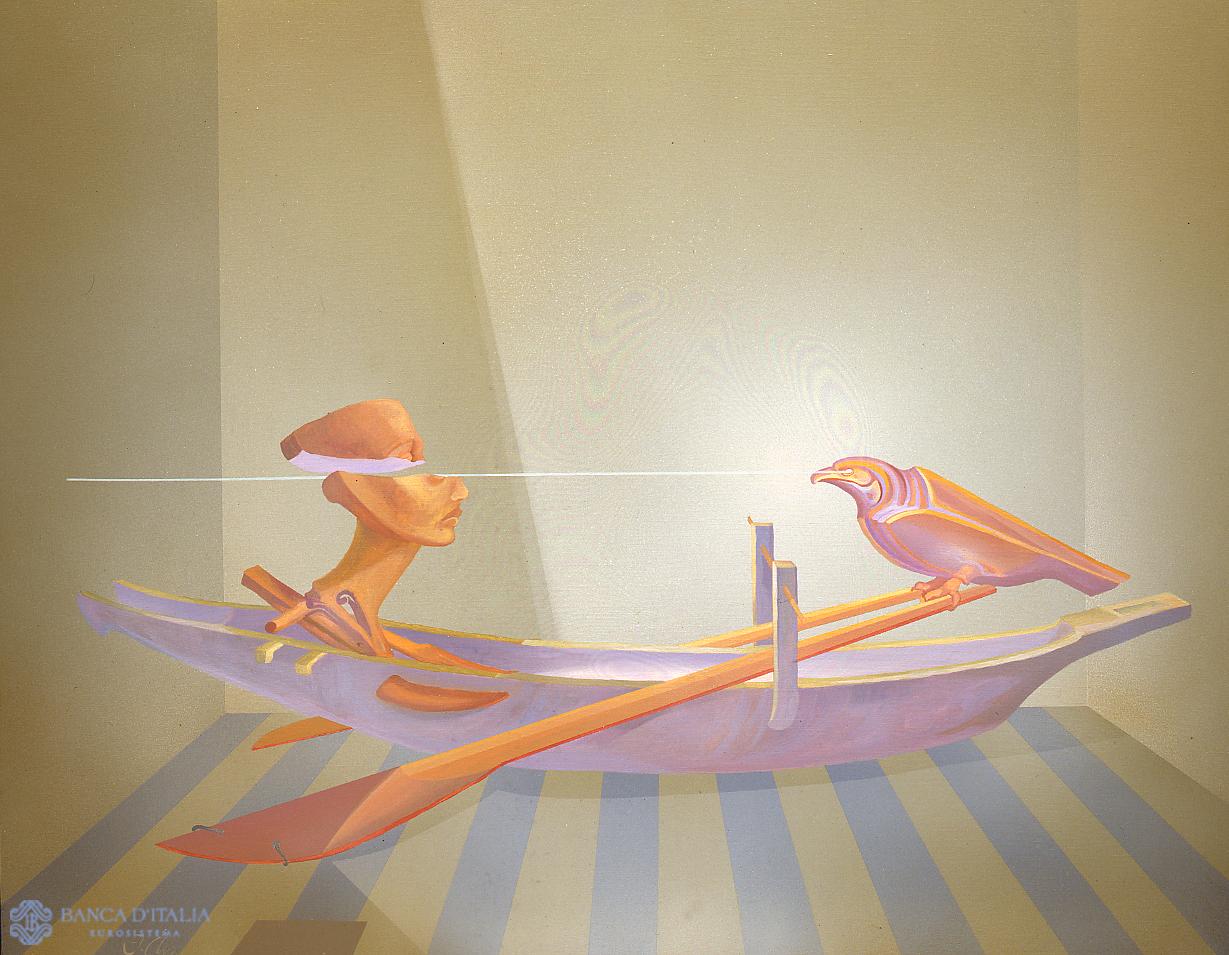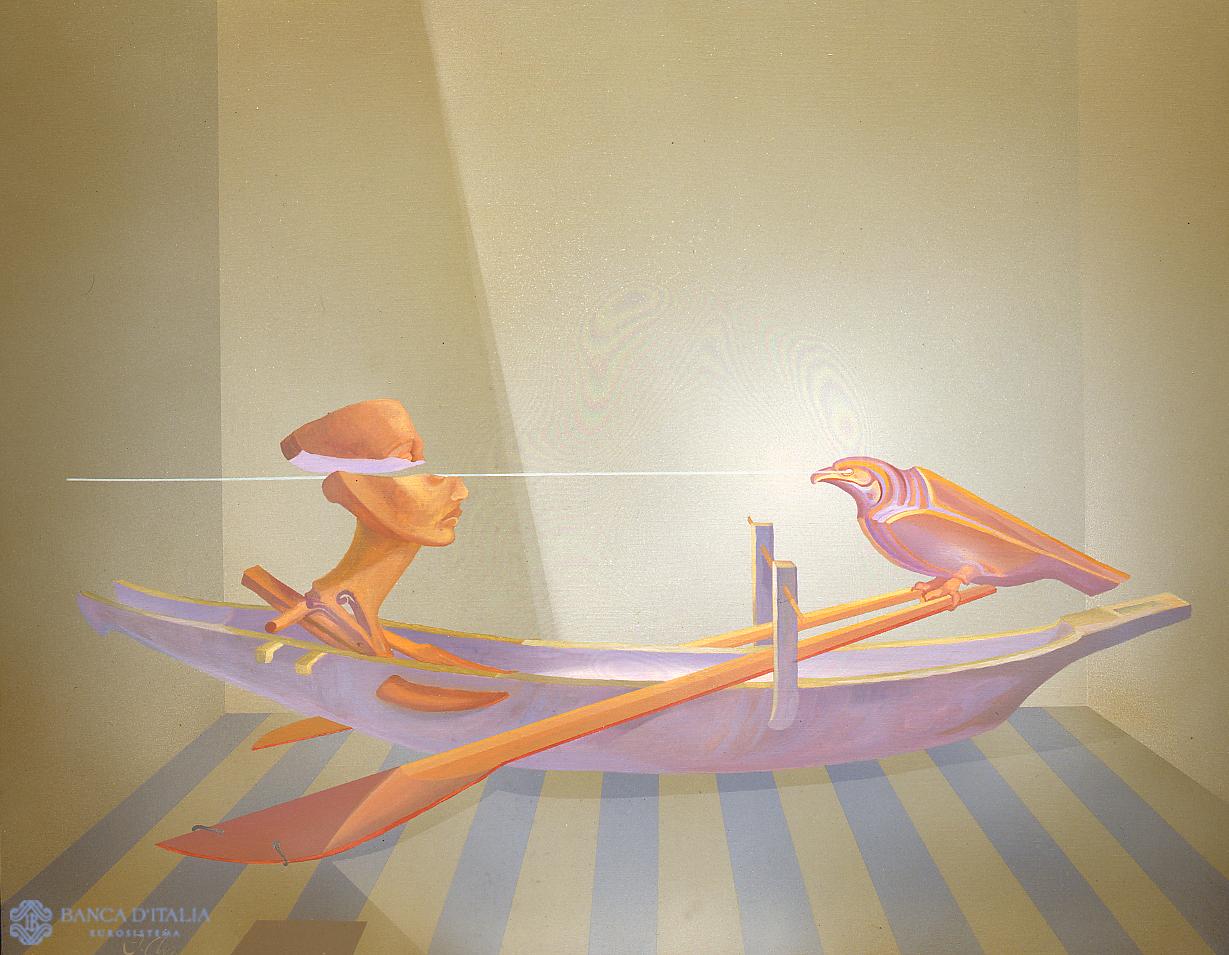Fabrizio Clerici was born in Milan in 1913. He studied architecture in his home town, later opting to become a painter and he moved to Rome and maintaining nevertheless an interest for drawing, which structured his paintings which were coloured in pale tones, often inspired by fantastic visions of cities or archeological monuments. Painter, stage designer and engraver, he was one of the most important exponents of Italian Surrealism in the postwar period. His true master was Savinio who he interpreted in an intelligent and cosmopolitan way. In 1942 he was awarded the Pizzi prize in Milan and in 1954 he received the Venice Biennale prize. During the course of his work as a stage designer, for which he showed great powers of inventiveness and demonstrated his modernity, he designed sets for the operas of Stravinsky and Purcell. His taste for buried cities, ruins and archeological remains brought him to a more poetic and, at the same time, more realistic style than that of Savinio and one that was more meditative than that of the Belgian Surrealists. This stylistic phase was mirrored in his sets for the works of Monteverdi, Lulli and Goldoni, works in which he returned to Surrealist motifs suggested by the Minotaure magazine. Densely filled with esoteric symbols, his painting aligned itself with European Surrealism of which he became the most important representative of Italy in the postwar period, becoming a close friend of de Chirico and Guttuso.
Fabrizio Clerici
Fabrizio Clerici (Milan 1913 - Rome 1993)
20th century AD


